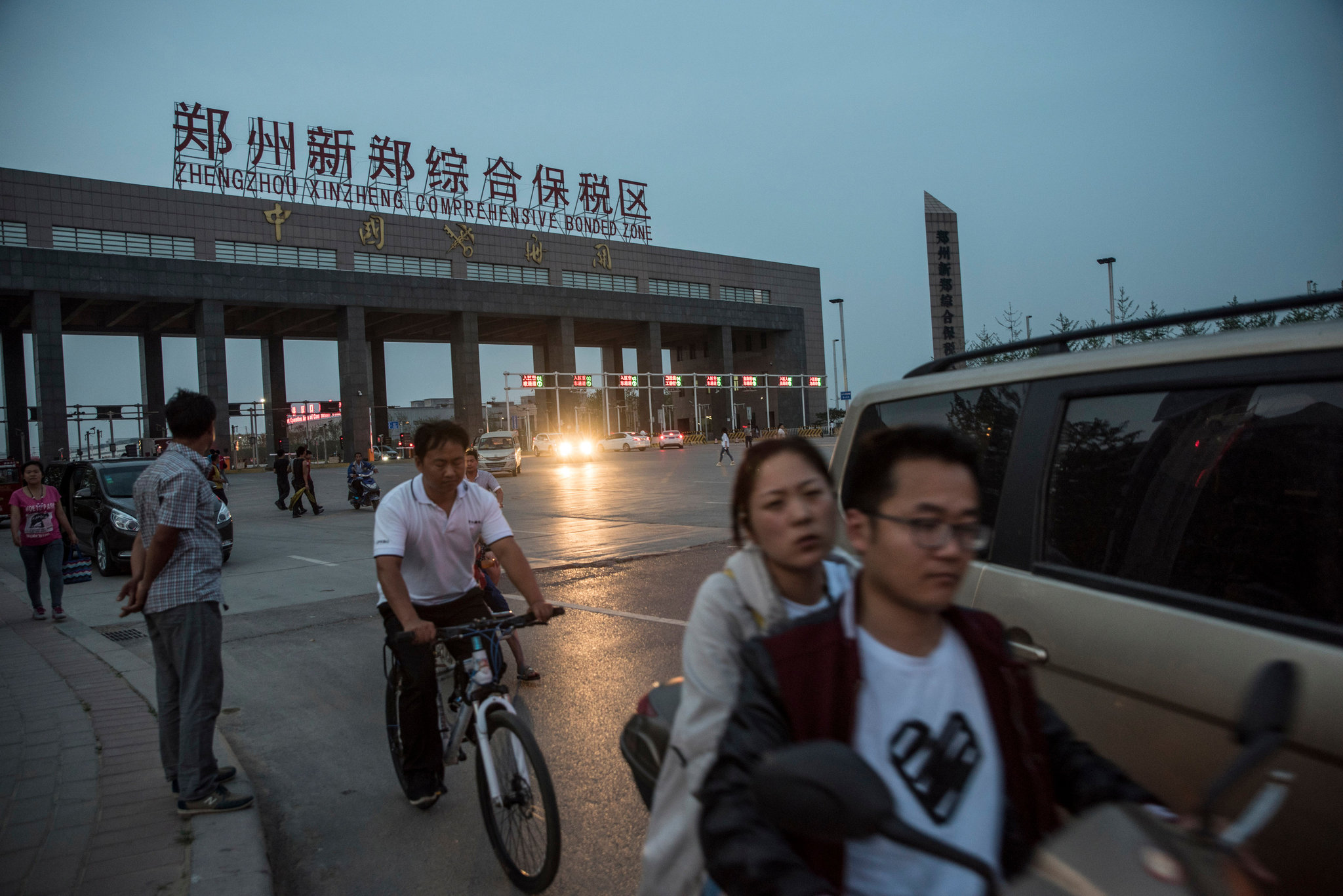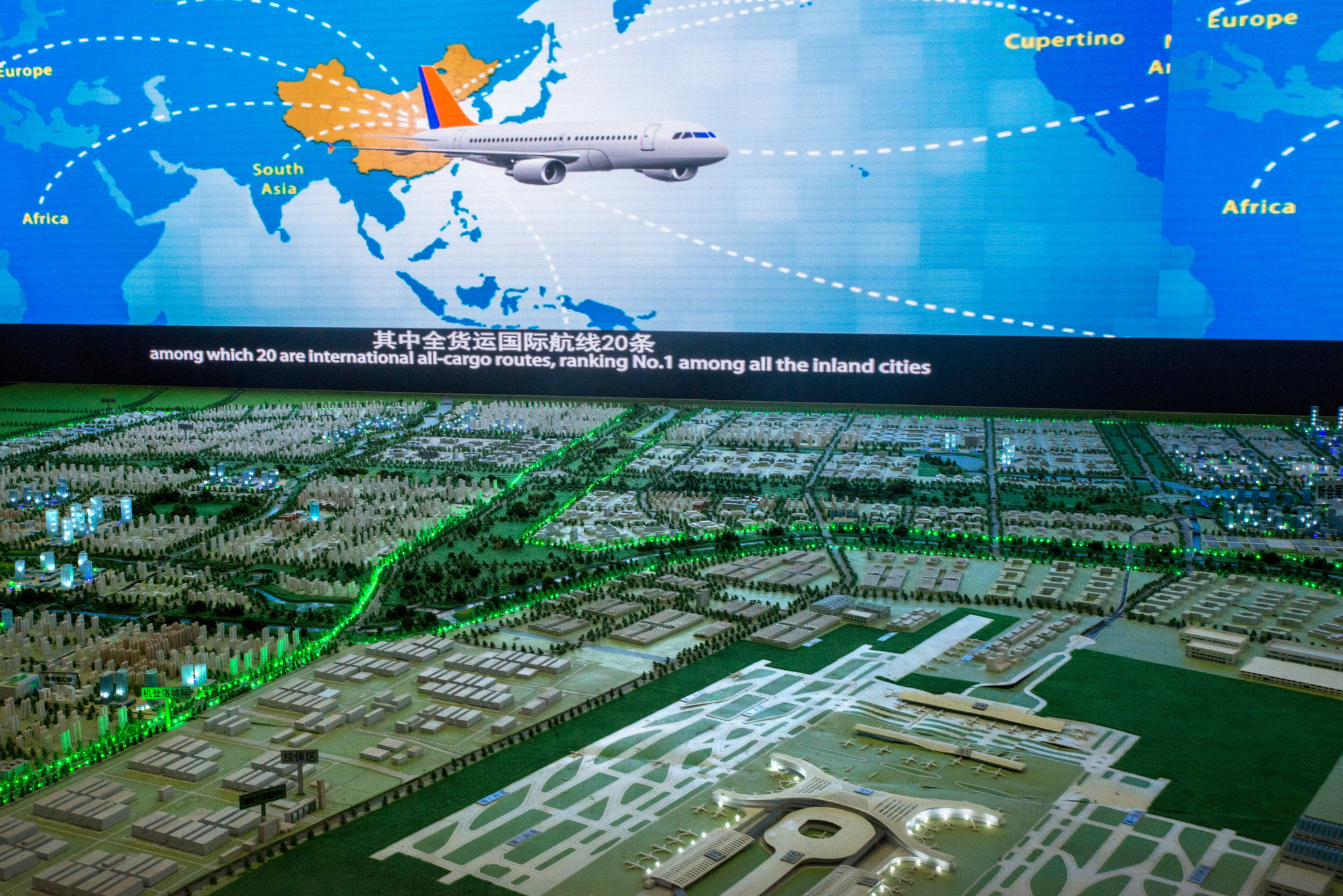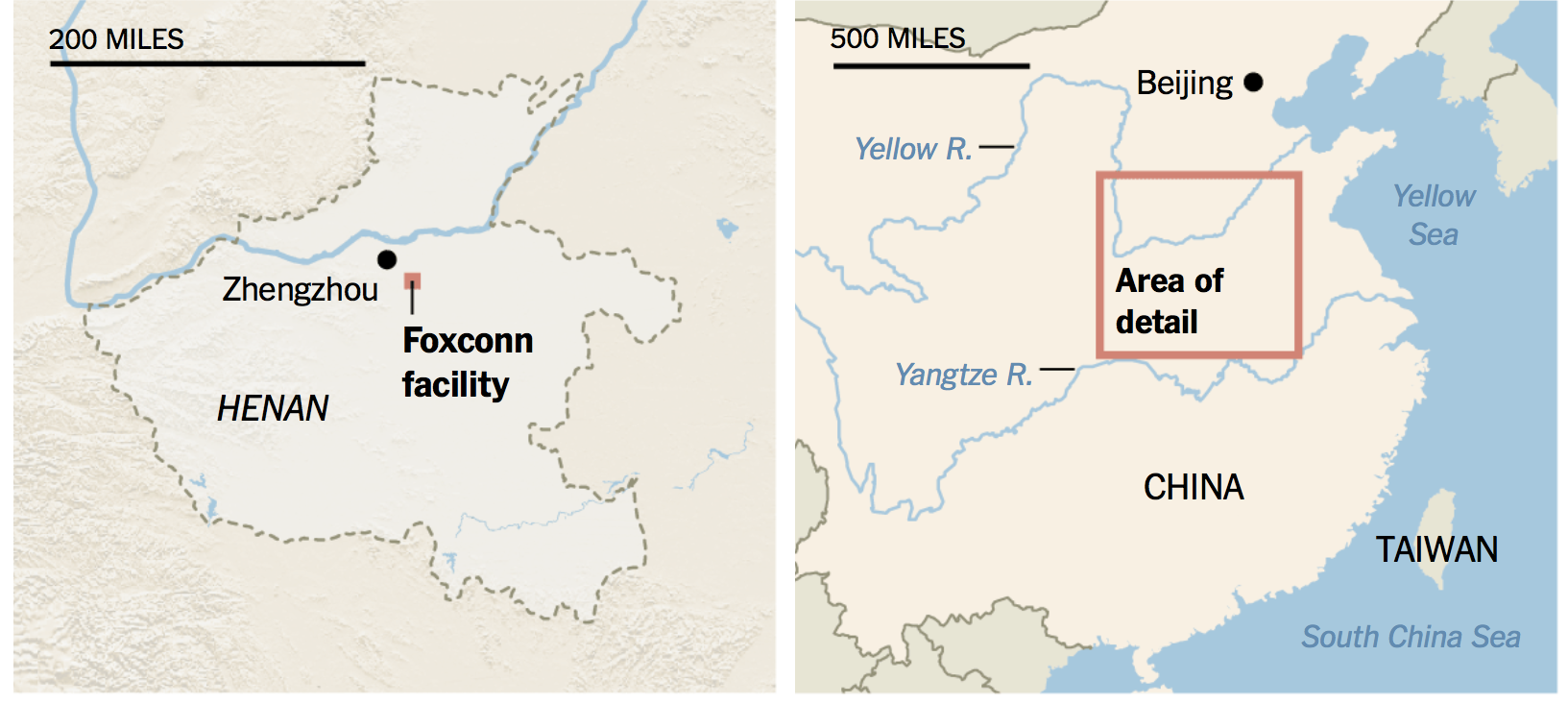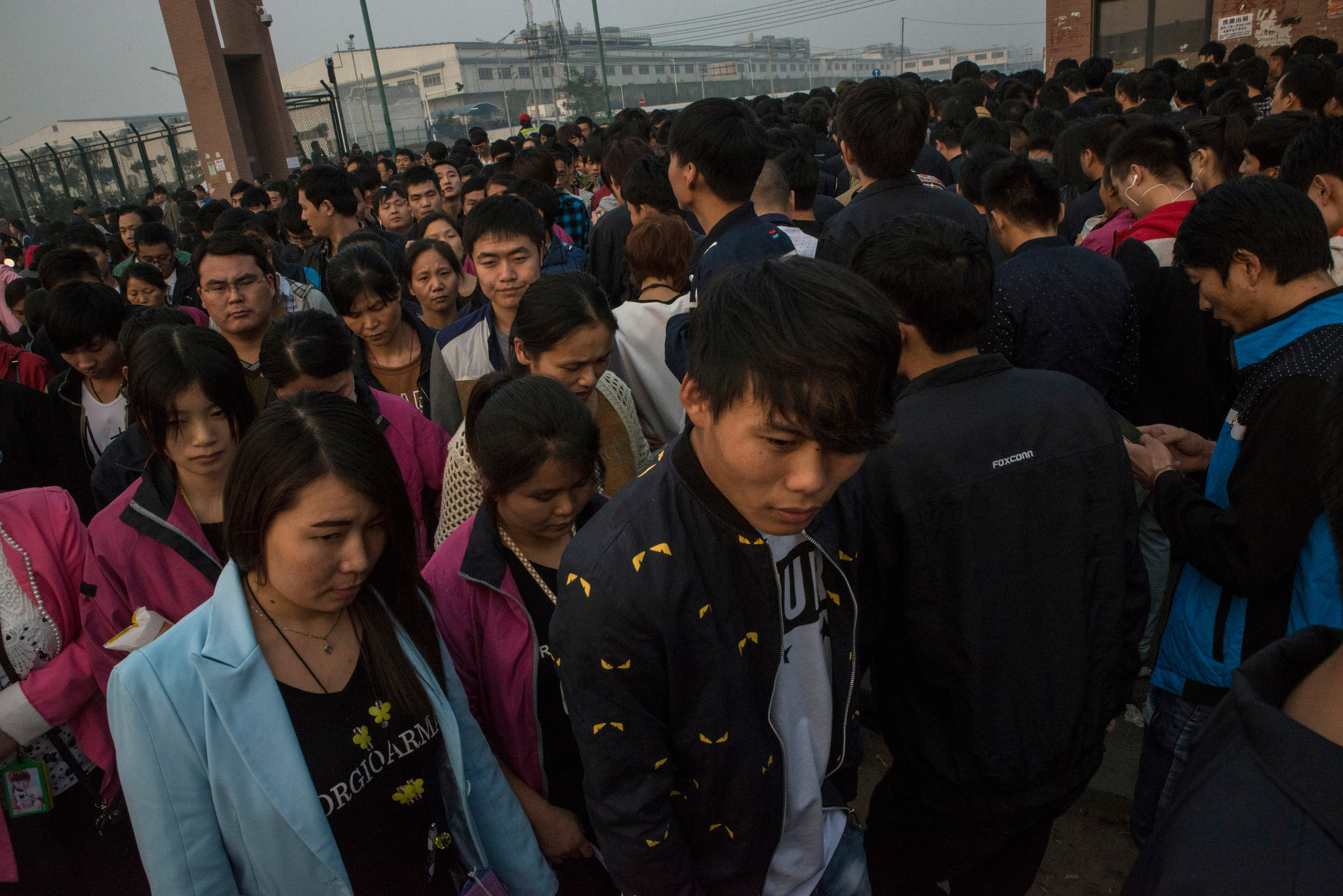Most of the iPhone models Apple develops, markets and sells are being assembled by Foxconn, the world’s leading contract manufacturer. In a new investigative piece, The New York Times newspaper delves into the inner workings of Foxconn’s iPhone manufacturing plant in Zhengzhou, a city of six million people in an impoverished region of China.
Fun fact: the world’s biggest iPhone factory, referred to as “iPhone City” by the locals, is capable of churning out half a million iPhones per day at peak.
Author David Barboza was able to uncover confidential government records and had to conduct a bunch of interviews with logistics handlers, truck drivers, factory workers, tax specialists and executives from Apple and Foxconn to paint an accurate picture of the massive scale of Apple’s operations in China.
For starters, “iPhone City” is responsible for half the world’s iPhone output.
An excerpt from the report:
A crushing work force begins arriving for the early shift at 6:30 a.m. They travel by foot, by bus, by motor scooter and even by pedicab. They file steadily into dozens of factory sites, spread out across 2.2 square miles. At the peak, some 350,000 workers assemble, test and package iPhones — up to 350 a minute.
The government pays recruiters a subsidy for every worker they hire, Mr. Liu said. “If the demand is high, then they will pay more,” he said. “If the demand is low, then the payment will be low, too.”
It is no secret that Foxconn built the Zhengzhou facility with “billions in perks” and a “hidden bounty of benefits tax breaks and subsidies” by the Zhengzhou government.
Decades ago, China created special economic zones that offer tax breaks to multinationals and exempt them from costly and cumbersome rules.
Beijing has never disclosed the total value of benefits and subsidies for the Zhengzhou operation. Apple said it was not a party to Foxconn’s negotiations. What we do know is that Zhengzhou did pledge to spend more than $10 billion to vastly expand an airport just a few miles from the iPhone factory to expedite Apple’s global shipments.
You can see a model of that airport on the image below.
Some of the perks supplied to Foxconn by the Zhengzhou government include:
- Built and partly financed the construction of a huge manufacturing complex at a cost of $600 million.
- Spent around $1 billion to build housing that could accommodate hundreds of thousands of workers.
- Provides a discount that reduces the cost of power by 5 percent annually.
- Built infrastructure, including power generators and a 24-kilometer pipeline.
- Eliminated corporate taxes and value added taxes for five years, then halved the usual rate for the next five years.
- Granted a $250 million loan from the municipal treasury.
- Helps recruit and train workers, as well as paying subsidies for new hires.
- Lowered the amount of social insurance and other payments by up to $100 million a year.
- Offers bonuses tied to the growth of exports.
- Pays out a subsidy to help defray the cost of shipping goods.
In the mid-1980s, Apple used to manufacture Macs in its own factories in Texas and California. Following Jobs’s return at Apple’s helm in the late 1990s, Apple partnered with Foxconn and moved all production overseas. Foxconn’s heft and expertise has allowed Apple to build the original iPod and other products on a huge scale that would not have been possible if the firm hadn’t outsourced production to China.
The location of Foxconn’s “iPhone City”.
Ahead of the original iPhone’s launch, Foxconn considered offers by officials from various cities before eventually choosing Zhengzhou for its huge manufacturing plant. The city even provided a $250 million loan to Foxconn, with government subsidies totaling $56 million in the facility’s first two years of iPhone manufacturing.
Jeff Williams, Apple’s current chief operating officer who was Tim Cook’s right-hand man back then, was part of the early discussions about setting up a factory.
“I was impressed,” Williams told the paper. “They were very focused.”
In 2014, the Zhengzhou facility had 94 production lines for iPhone 6 and iPhone 5s.
Foxconn’s ability to produce Apple gadgets on a truly massive scale was first tested with the introduction of the original iPod music player, according to the following illustrative excerpt from the investigative piece:
When Apple’s sales took off after the introduction of the iPod in 2001, Foxconn had the heft and expertise to meet the demand that accompanied each hit product. Foxconn’s factories could quickly produce prototypes, increase production and, during peak periods, hire hundreds of thousands of workers.
Foxconn founder Terry Gou provided political clout, spending years building relationships with Chinese officials and lobbying for subsidies, cheap land, workers and infrastructure for his firm’s facilities.
According to former Apple executive Joe O’Sullivan, Foxconn has some “brilliant tooling engineers”. They earned Apple’s respect by showing willingness “to invest a lot” over the years in order to keep pace with Apple’s explosive growth.
Tony Fadell, another former Apple executive also known as the iPod Godfather, attributed Foxconn’s impressive growth to the managerial skills of Terry Gou.
“He said he’d create the manufacturing, and the Chinese government would give him some of the money to do it,” Fadell told NYT’s Barboza. “As Terry grew with the Apple business, no one else could compete,” he continued.
Apple said it was aware of the government’s infrastructure support given to Foxconn, but underscored it had no knowledge of specific grants, subsidies or tax breaks.
Foxconn on its part said in a separate statement to the paper that the government support it has received over the years was “no different than similar tax breaks all companies get in locations around the world for major investments.”
Top image: Foxconn workers leaving at the end of the day shift through the gates of the Zhengzhou bonded zone. Photo credit: Gilles Sabrie for The New York Times.
Source: The New York Times



